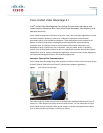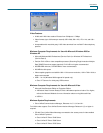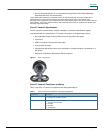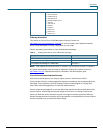
Data Sheet
© 2008 Cisco Systems, Inc. All rights reserved. This document is Cisco Public Information. Page 2 of 7
When registered to Cisco Unified Communications Manager, the Cisco Unified Video Advantage-
enabled phone has the features and functions of a full-featured IP videophone. It supports
conversations on any video endpoint supported by Cisco Unified Communications Manager.
System administrators can provision a Cisco Unified IP phone with Cisco Unified Video Advantage
just as they would any other Cisco Unified IP phone, greatly simplifying deployment and
management. Enterprise customers now have a cost-effective, scalable, and visually interactive IP
communications solution.
Important Features and Benefits
Cisco Unified Video Advantage is innovative in that video telephone calls are just like regular
phone calls. Features such as Call Forward, Transfer, Conference, and Hold are now available
with video, and they are all initiated through the Cisco Unified IP phone. IP telephony and IP video
telephony are delivered to every employee using a unified dial plan and a common directory over a
single Cisco Unified Communications infrastructure.
The video codec and bandwidth selection in Cisco Unified Video Advantage is completely
controlled by Cisco Unified Communications Manager or Cisco Unified Communications Manager
Express, so you need no special experience or knowledge about video capabilities or settings. You
no longer need to predetermine if the other end of the call is a video endpoint or phone.
Enabling interactive face-to-face communications at the desktop enhances productivity and the
quality of communications, streamlines business decision making, and improves teamwork. By
reducing the need for in-person meetings, Cisco Unified Video Advantage can help your company
save money on travel expenses, strengthen an existing telecommuting program, or reduce your
organization’s carbon footprint in traveling to meetings (see figure 2). Cisco Unified Video
Advantage is designed to deliver enhanced modes of communication while protecting existing
unified communications investments.
Figure 2. Local and Remote Views









